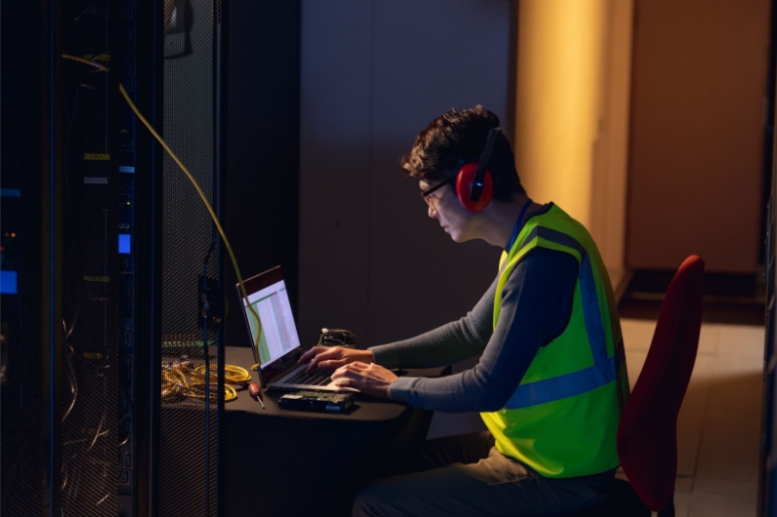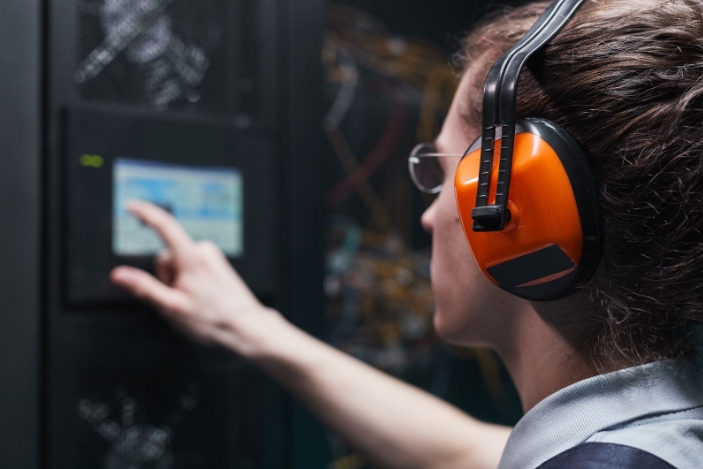Fire & Safety Consultancy
How to Conduct Noise Monitoring in the Workplace

Workplace noise may not seem like an immediate hazard, but day after day, it takes a toll.
Constant exposure can quietly steal hearing, drain productivity, and put overall worker safety on the line.
In fact, according to the Ministry of Manpower’s (MOM) Workplace Safety and Health (WSH) Report 2024, Noise-Induced Deafness (NID) remains one of Singapore’s most common occupational diseases, with 519 reported cases that year.
This makes one thing clear: noise monitoring should be a regular part of your workplace safety routine. It can keep your people safe, healthy, and protected in the long run. It also keeps you compliant with Singapore’s safety regulations.
In this article, we’ll share simple, practical steps to monitor workplace noise effectively.
What is Noise Monitoring in the Workplace?
Noise monitoring is carried out to track noise exposure levels in the workplace.
In Singapore, if 10 or more employees are likely exposed to excessive noise, the workplace occupier is responsible for arranging noise monitoring, as required under WSH Noise Regulations.
Furthermore, noise monitoring must be conducted at least once every three years, or sooner if any changes in machinery, equipment, operations, or work conditions could expose employees to excessive noise. The monitoring must be carried out by a competent, trained person.
When it comes to practical applications, workplace noise monitoring matters in industries like manufacturing, construction, and logistics; basically, anywhere your team might be exposed to high noise levels.
What is Considered Excessive Noise?
An employee is considered exposed to excessive noise if, without hearing protection, the sound exceeds the limits set in the WSH Noise Regulations, reaches an equivalent of 85 dB(A) over an 8-hour workday for fluctuating noise, or hits a peak level above 140 dB(C).
Why is Noise Monitoring Important?
Workplace noise monitoring is essential for three primary reasons: health, legal compliance, and business benefits.
When there is too much noise in the workplace, employees can experience hearing loss, stress, sleep disturbance, and other health problems. Noise monitoring can help prevent this by identifying areas where noise levels are too high, allowing job sites to take steps and reduce those levels.
Beyond protecting employee health, noise monitoring also helps organisations meet regulatory requirements, such as the WSHA and Workplace Safety and Health Noise Regulations, avoiding penalties and demonstrating a commitment to safety.
Lastly, managing noise levels can boost productivity and even lower insurance costs, making it a smart investment for both employee well-being and overall business efficiency.
How to Conduct Noise Monitoring in the Workplace (Step-by-Step Guide)
1. Identify Noise Hazards
Conduct walk-through inspections of the facility, paying close attention to areas with high-decibel equipment such as heavy machinery, compressors, generators, etc. Employee feedback is also valuable, as workers often notice sources of noise that may not be obvious during a single inspection.
Documenting observations provides a baseline for monitoring and noise assessment and helps prioritise which areas require more detailed noise measurement and mitigation strategies.
2. Use the Right Equipment
To ensure accurate noise monitoring, use appropriate equipment to measure noise, such as the sound level meter (SLM), the integrated sound level meter (ISLM), and the noise dosimeter
- Sound level meter (SLM) is a hand-held device that measures the noise level at a specific location at one moment in time.
- Integrating sound level meter (ISLM) also measures at a fixed location but calculates the equivalent sound level over a period, even when noise fluctuates, though it does not track individual exposure.
- Noise dosimeter, on the other hand, is worn by a worker and records the average noise exposure over a full shift, accounting for changes in noise intensity and movement to provide a personal exposure measurement.
3. Select Monitoring Locations
Focus on high-noise zones such as production lines, workshops, or areas near heavy machinery.
Include mobile workers’ paths if employees move between areas, and consider machinery areas where noise levels fluctuate depending on usage. Strategic placement of measurement devices ensures that both peak and average exposure are captured.
Additionally, regularly review locations, especially when new equipment is installed or work processes change.
4. Measure Over a Work Shift
Noise monitoring should cover an entire work shift to capture both peak and average exposures. Collecting comprehensive data over the full shift provides a reliable basis for assessing compliance with regulations and identifying trends.
Use dosimeters for employees who move between different areas and sound level meters for stationary points.
5. Record & Analyse Data
Once noise measurements are collected, all data must be carefully recorded and analysed. Compare results against regulatory limits, such as those specified by the Ministry of Manpower (MOM) for allowable noise exposure.
6. Take Corrective Actions
When monitoring indicates that noise levels exceed safe limits, implement appropriate corrective actions.
Engineering controls, such as installing sound barriers or enclosure,s can reduce noise at the source.
Personal protective equipment (PPE), like earplugs or earmuffs, provides additional protection when engineering solutions are insufficient. Additionally, administrative measures, such as work rotation or limiting exposure duration, can also reduce overall risk.
7. Report & Maintain Records
Maintain detailed records of noise monitoring activities, equipment used, results, and actions taken to reduce exposure.
Proper documentation ensures that findings are traceable, supports decision-making for corrective actions, and serves as evidence of compliance during audits or inspections.
What are Recommended Noise Control Measures

To protect employees from harmful noise exposure, workplaces should implement a combination of engineering controls, administrative measures, and the use of personal protective equipment (PPE).
Engineering Controls (reduce noise at the source or along its path):
- Install barriers like sound walls, curtains, or screens between noise sources and employees.
- Choose low-noise tools and machinery to minimise generated sound. Enclose or isolate noisy machines to prevent sound from spreading to work areas.
- Maintain and lubricate equipment regularly, such as oiling bearings, to prevent unnecessary noise.
Administrative Controls (limit worker exposure to noise):
- Rotate employees or limit the time spent near noisy machinery.
- Provide quiet areas where employees can take breaks from hazardous noise.
- Increase the distance between workers and noise sources
Personal Protective Equipment (PPE):
- Use correctly fitted earplugs or earmuffs whenever engineering or administrative controls cannot fully reduce noise exposure.
Protect Your Team with Proactive Noise Monitoring
A little extra attention to noise today can save your team from long-term issues tomorrow. Monitoring regularly helps protect employees and keeps your business compliant.
To ensure your team is well-equipped with the right knowledge, enrolling in noise safety training is an effective way to promote workplace safety and stay compliant with regulations.
With over 30 years of experience in the fire and safety industry, TECS offers expert consultancy, comprehensive training, and quality personal protective equipment (PPE) to help businesses maintain a safe and compliant work environment.
Explore our courses today or contact us to get started with your team’s workplace safety training.
 Login
Login 




